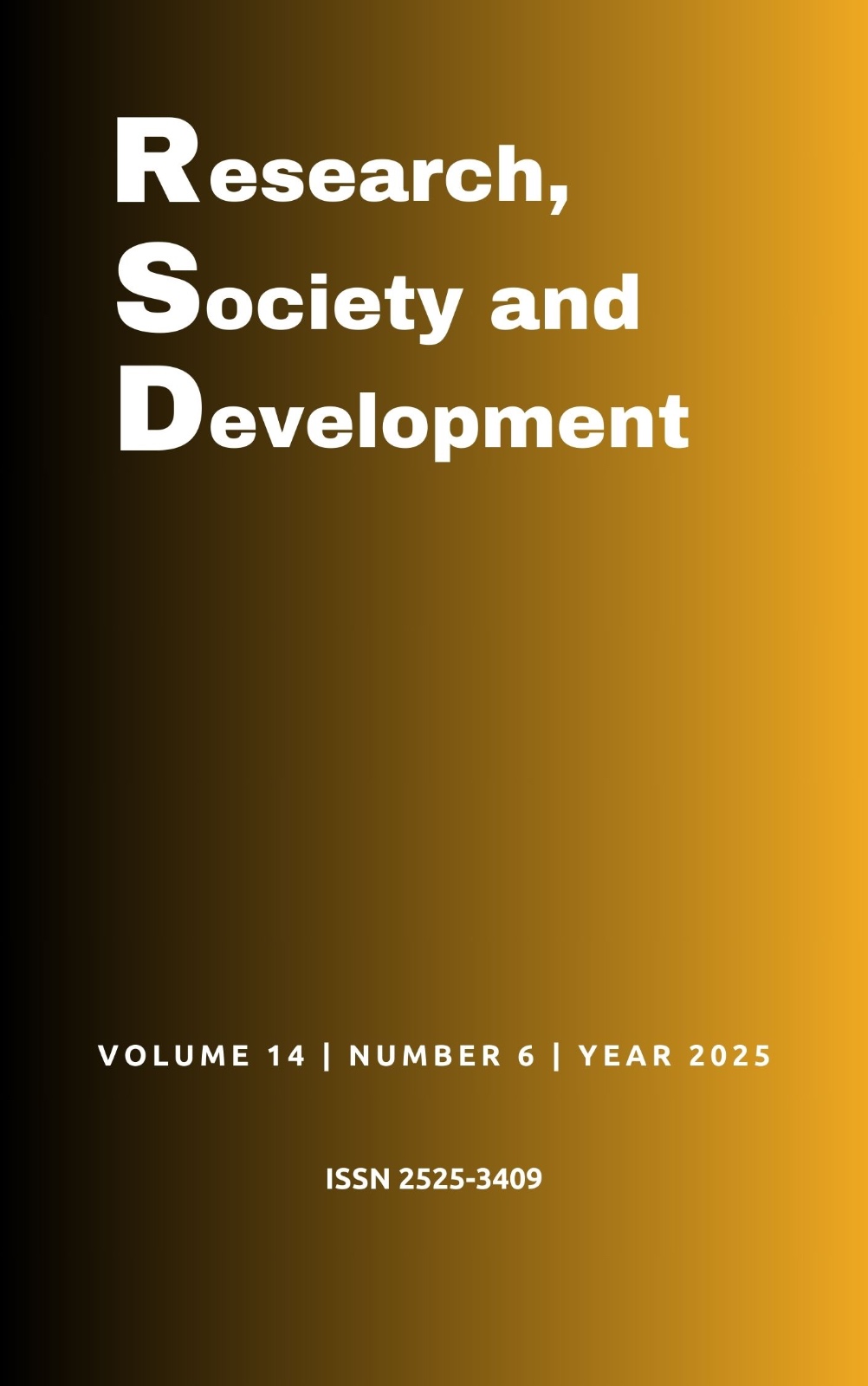Predictive analysis of health-related absences among employees of the Regional Electoral Court of Rio Grande do Norte using LSTM neural networks
DOI:
https://doi.org/10.33448/rsd-v14i6.49003Keywords:
Neural Networks (Computer), Human resource management, Occupational health, Time series.Abstract
The Electoral Justice system is characterized by peaks in demand during election years and reduced demand in non-election years, requiring strategic human resource planning with internal staff reassignments during critical periods. In this context, this study aimed to predict health-related absences at the Regional Electoral Court of Rio Grande do Norte (TRE-RN), identifying patterns to support decisions on staff reinforcement during critical periods, based on the analysis of 15 years of medical leave data (from 2010 to 2024). The methodology involved analyzing absence data using a Long Short-Term Memory (LSTM) neural network implemented with the PyTorch library in Python. The results demonstrated the effectiveness of the LSTM model in forecasting, achieving a Mean Absolute Error (MAE) of 3.14 and a Root Mean Square Error (RMSE) of 4.05, outperforming the traditional SARIMAX model. This research contributes to human resource management at TRE-RN by supporting decisions on staff allocation during election periods and providing additional insights for monitoring occupational health conditions by the sector responsible for employee healthcare.
Downloads
References
Albeladi, K., Zafar, B., & Mueen, A. (2023). Time series forecasting using LSTM and ARIMA. International Journal of Advanced Computer Science and Applications, 14(1), 313–314. https://www.ijacsa.thesai.org
Auffarth, B. (2021). Machine learning for time-series with Python. Packt Publishing.
Brockwell, P. J., & Davis, R. A. (2016). Introduction to time series and forecasting (3rd ed.). Springer.
Cheung, Y.-W., & Lai, K. S. (1998). Power of the augmented Dickey-Fuller test with information-based lag selection. Journal of Statistical Computation and Simulation, 60(1), 57–65.
De Paula, D. M., Xavier Júnior, J. C., & Miranda, K. F. (2020). Aplicação de séries temporais para previsão de despesas de energia elétrica do Tribunal Regional Eleitoral do Rio Grande do Norte. Brazilian Journal of Development, 6(11), 87089–87112.
Dubey, A. K., Kumar, A., García-Díaz, V., Sharma, A. K., & Kanhaiya, K. (2021). Study and analysis of SARIMA and LSTM in forecasting time series data. Sustainable Energy Technologies and Assessments, 47, 101474.
Esculápio, M. (2013). A gestão de recursos humanos no serviço público [Monografia]. Universidade Tecnológica Federal do Paraná.
Faceli, K., Lorena, A. C., Gama, J., Almeida, T. A., & Carvalho, A. C. P. L. F. (2023). Inteligência artificial: Uma abordagem de aprendizado de máquina (2a ed.). LTC.
Fleck, L., Tavares, M. H. F., Eyng, E., Helmann, A. C., & Andrade, M. A. (2016). Redes neurais artificiais: Princípios básicos. Revista Eletrônica Científica Inovação e Tecnologia, 7(15), 47.
Gers, F. A., Schraudolph, N. N., & Schmidhuber, J. (2002). Learning precise timing with LSTM recurrent networks. Journal of Machine Learning Research, 3, 115-143.
Härter, F. P. (2007). Redes neurais recorrentes aplicadas à assimilação de dados em dinâmica não-linear [Tese de doutorado, Instituto Nacional de Pesquisas Espaciais].
Hochreiter, S., & Schmidhuber, J. (1997). Long short-term memory. Neural Computation, 9(8), 1735-1780 .
Livieris, I. E., Pintelas, E., & Pintelas, P. (2020). A CNN–LSTM model for gold price time-series forecasting. Neural Computing and Applications, 32(23), 17351–17360.
Mesquita, L. A. F. (2024). Redes neurais artificiais aplicadas a séries temporais para predição de enchentes [Master's thesis, Instituto de Ciências Matemáticas e de Computação – ICMC-USP].
Meta AI. (2023). PyTorch (Version 2.0.0) [Computer software].https://pytorch.org
Nascimento, E. G. S. et al. (2015). Um algoritmo baseado em técnicas de agrupamento para detecção de anomalias em séries temporais . In: Shitsuka, R. & Shitsuka, D. M. (2015). Estudos e Práticas de Aprendizagem de Matemática e Finanças com Apoio de Modelagem. Editora Ciência Moderna
Nelson, D. M. Q. (2017). Uso de redes neurais recorrentes para previsão de séries temporais financeiras [Master's thesis, Universidade Federal de Minas Gerais].
Pereira, A. S., Shitsuka, D. M., Parreira, F. J., & Shitsuka, R. (2018). Metodologia da pesquisa científica [Recurso eletrônico]. Santa Maria, RS: UAB/NTE/UFSM.
Python Software Foundation. (2023). pmdarima: ARIMA modeling with auto-tuning (Version 2.0.3) [Python package].https://pypi.org/project/pmdarima/
Rostamian, A., & O'Hara, J. G. (2022). Event prediction within directional change framework using a CNN-LSTM model. Neural Computing and Applications, 34(20), 17193-17205 .
Sirisha, U. M., Belavagi, M. C., & Attigeri, G. (2022). Profit prediction using ARIMA, SARIMA and LSTM models in time series forecasting: A comparison. IEEE Access, 10, 124715-124727.
Spancerski, J. S., & Santos, J. A. A. D. (2021). Previsão da produtividade de arroz: Uma aplicação de redes neurais recorrentes LSTM. Revista Cereus, 13(2), 45-62.
The Pandas Development Team. (2020). pandas: Python data analysis library (Version 1.1.2) [Computer software]
Zha, W., Liu, Y., Wan, Y., Luo, R., Li, D., Yang, S., & Xu, Y. (2022). Forecasting monthly gas field production based on the CNN-LSTM model. Energy, 260, 124889.
Downloads
Published
Issue
Section
License
Copyright (c) 2025 Flávio Roberto Guerra Seabra; João Carlos Xavier Júnior

This work is licensed under a Creative Commons Attribution 4.0 International License.
Authors who publish with this journal agree to the following terms:
1) Authors retain copyright and grant the journal right of first publication with the work simultaneously licensed under a Creative Commons Attribution License that allows others to share the work with an acknowledgement of the work's authorship and initial publication in this journal.
2) Authors are able to enter into separate, additional contractual arrangements for the non-exclusive distribution of the journal's published version of the work (e.g., post it to an institutional repository or publish it in a book), with an acknowledgement of its initial publication in this journal.
3) Authors are permitted and encouraged to post their work online (e.g., in institutional repositories or on their website) prior to and during the submission process, as it can lead to productive exchanges, as well as earlier and greater citation of published work.


